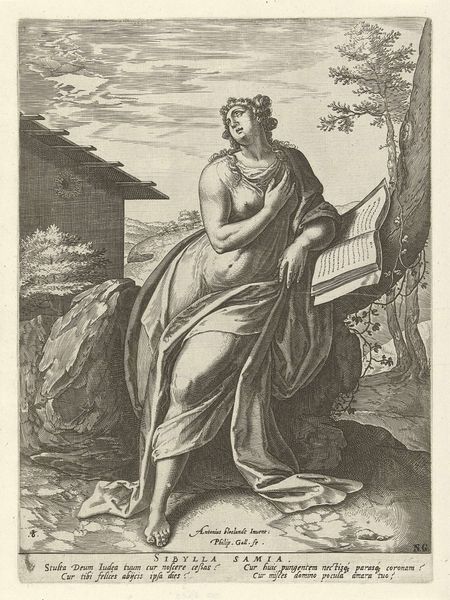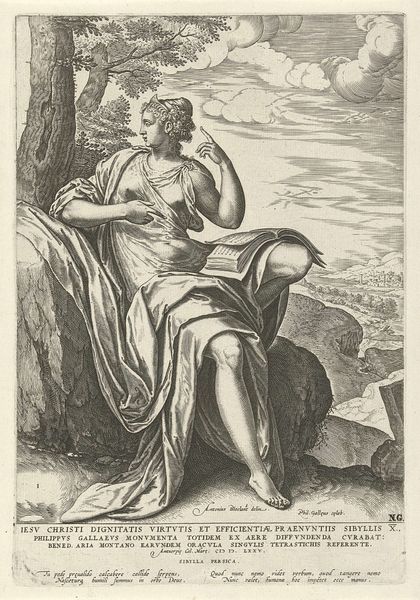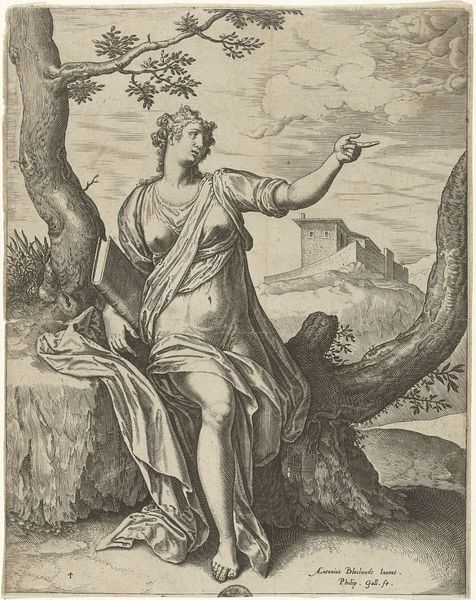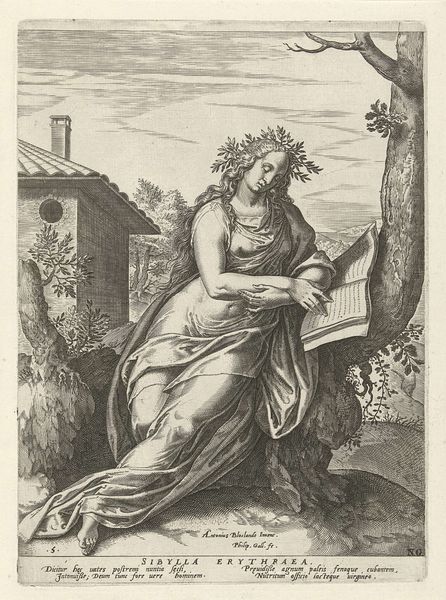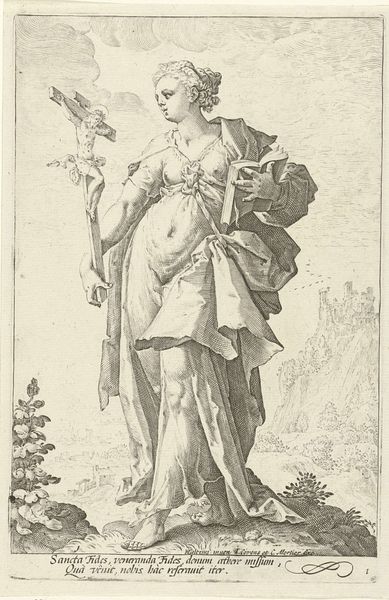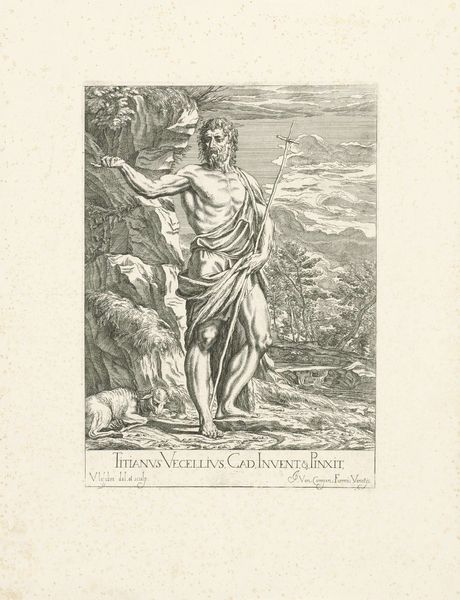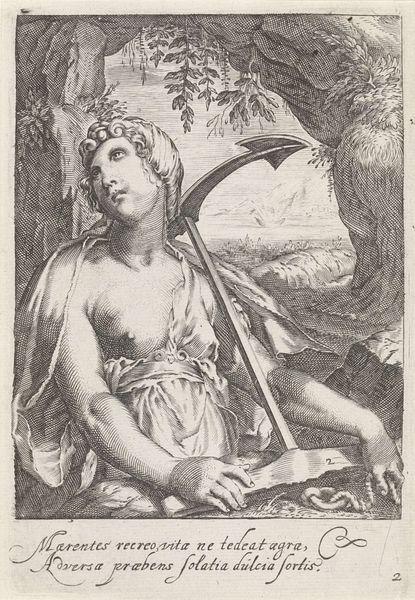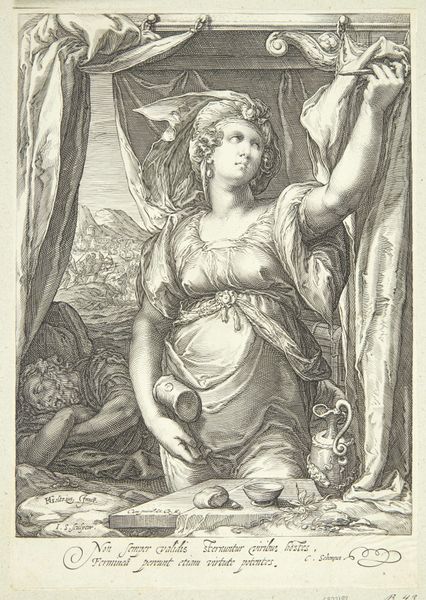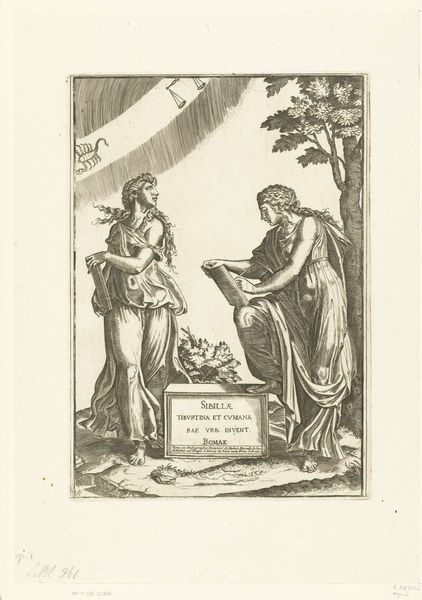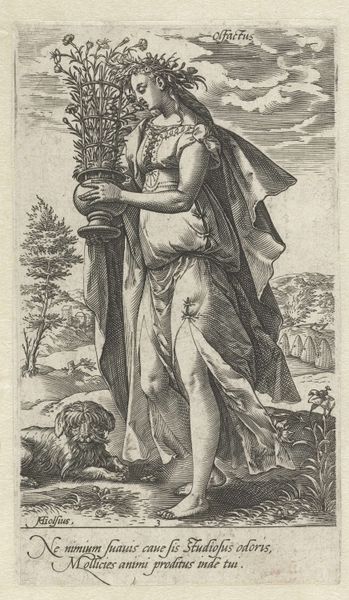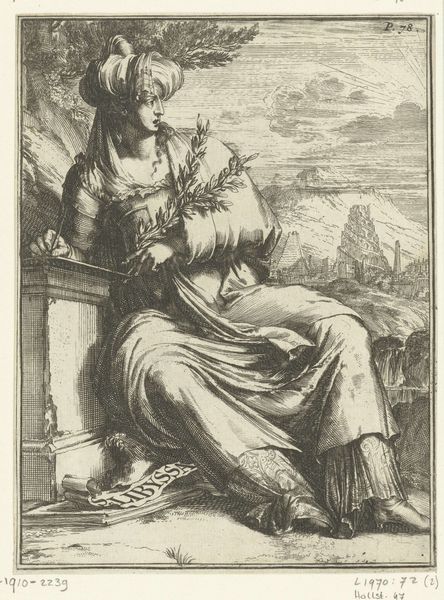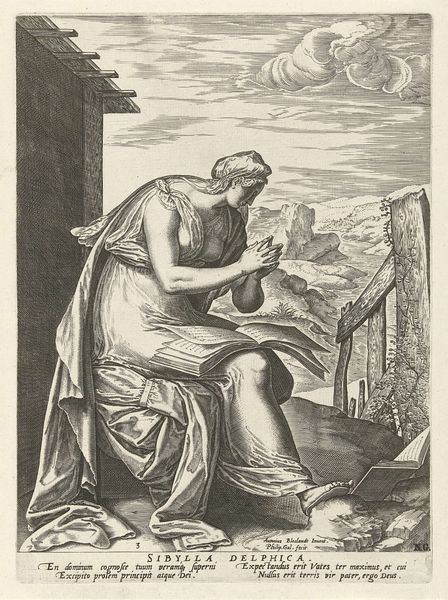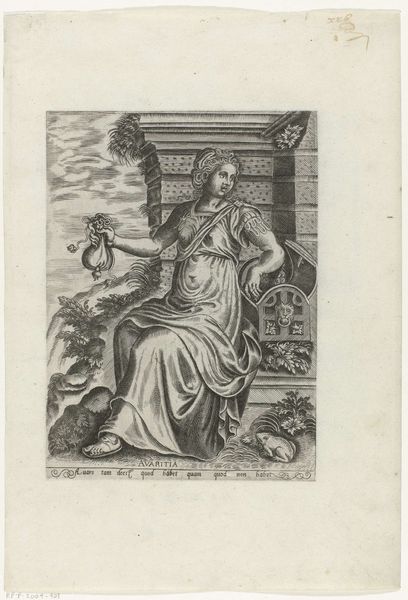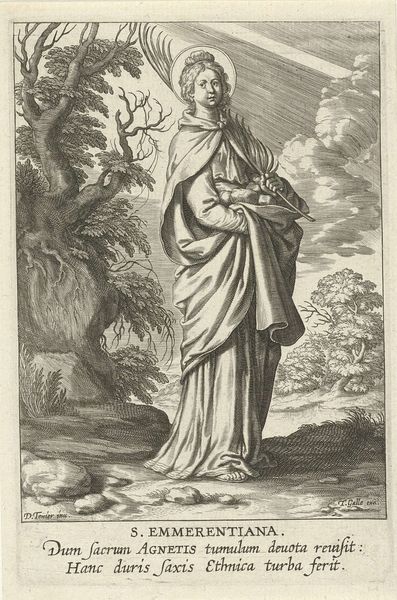
print, engraving
#
allegory
# print
#
old engraving style
#
classical-realism
#
mannerism
#
figuration
#
form
#
11_renaissance
#
line
#
history-painting
#
academic-art
#
engraving
Dimensions: height 285 mm, width 208 mm
Copyright: Rijks Museum: Open Domain
Curator: Ah, what a wonderfully pensive image! It's an engraving from 1575 by Philips Galle, called "Tiburtijnse Sibille", residing here at the Rijksmuseum. It has this sort of… wisened stillness to it. Like a quiet storm of prophecy contained. Editor: Yes, and immediately I'm struck by the way the Sibyl is positioned. Perched on a craggy outcropping, flanked by these almost menacing trees, it's a landscape pregnant with a kind of...precarity. The classical contrapposto of her pose juxtaposed with the wild, almost gothic sensibility of the forest around her... interesting. Curator: Gothic, you say? Well, maybe it’s my own slightly-askew perception, but I see that classical influence as totally taking hold, particularly in the drape of her garments and the way her form fills up all the space— like it's wrestling against the confines of the frame itself! Editor: Agreed, the classical influence is undeniable, especially when viewed through the lens of Renaissance Humanism, of course. I keep thinking about the prophecies attributed to the Sibyls. Remember, these prophecies, delivered by women outside the patriarchal structures of the church, often acted as subversive commentaries on power. Consider also the complexities of representing female authority in the 16th century and beyond, how Galle situates her— Curator: Indeed, you speak to this so poignantly; but perhaps it can be equally taken as that universal feeling to know or suspect, that this kind of knowledge brings both power and immense pain. The heaviness, but then, lightness. Do you catch that too, maybe? Like she holds up, somehow… Editor: Precisely that tension—between the burdens and the blessings, so to speak—captures something really compelling in these early modern interpretations of ancient figures. She embodies paradox! But how that paradox is read, received... it is perpetually subject to reinterpretation. Curator: How right you are! This kind of dance, I suppose. Anyway, I could happily stare at this piece all afternoon, and not tire of that expression she holds so well. Editor: And maybe that, in essence, is why we keep turning to these old, mysterious images—because their depths allow for so many reflected glances, again and again.
Comments
No comments
Be the first to comment and join the conversation on the ultimate creative platform.
